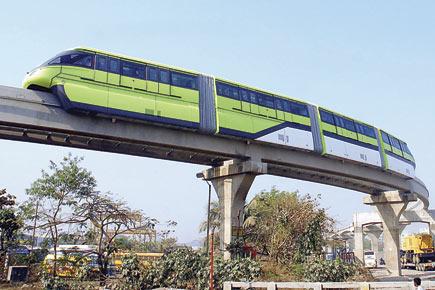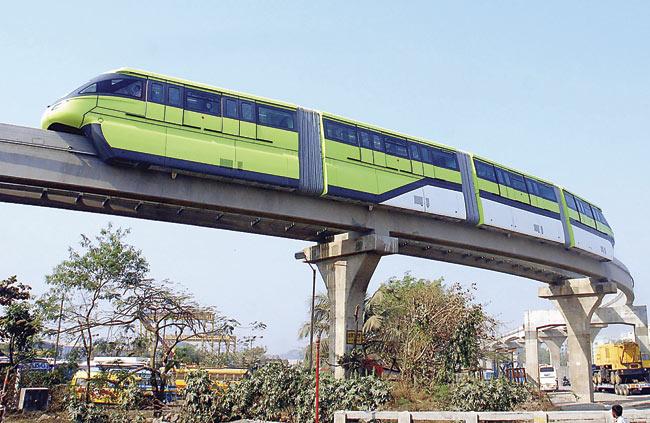It’s all very well to say that Mumbai is the financial capital of the country and how it needs to be right up there with public infrastructure to qualify as a global city

 It’s all very well to say that Mumbai is the financial capital of the country and how it needs to be right up there with public infrastructure to qualify as a global city. These are homilies that will be uttered by political parties as the state nears another assembly election.
It’s all very well to say that Mumbai is the financial capital of the country and how it needs to be right up there with public infrastructure to qualify as a global city. These are homilies that will be uttered by political parties as the state nears another assembly election.
The truth is that Mumbai, like most other elections, won’t matter in the manifestos of these political parties, nor will it feature prominently in the plans going ahead. The reason is simple, and it need not be over-analysed — Mumbai has no political ownership. Even the Shiv Sena, which has been in power in the BMC with its ally BJP for more than two decades, has shown little interest in the city’s infrastructure development. There is no indication to believe that there will be a sudden change of heart this time around.
ADVERTISEMENT

Most of the infrastructure projects are planned ad hoc, and have no relation to the overall development of the city. The Wadala-Chembur Monorail is one such example. File pic
Much has been written about Mumbai’s crumbling infrastructure, so much so that it has become fashionable to say the city is dying, or worse, dead.
It is neither dying nor dead, but what Mumbai suffers from is tactical attention and strategic neglect.
Think about it: most of the infrastructure projects are planned ad hoc, and have no relation to the overall development of the city. The Wadala-Chembur Monorail is one such example. The badly-planned feeder bus routes to the Mumbai Metro is another. While the Congress-NCP government has a lot to show in terms of value of the projects as well as the sheer number, the projects themselves have little strategic value.
Also, most of the infrastructure projects that the state government has approved for Mumbai have been for public and private transport. But take the yearly headache of water shortage. Between 1951 and 2011, Mumbai’s population has grown from 2.9 million to more than 20 million. The seven water sources to Mumbai were mostly built in the late 1800s and early 1900s. Only the Middle Vaitarna dam is of recent vintage. It is a shame that in 2014, Mumbai has to depend on the vagaries of rainfall to keep its citizens from going thirsty.
What if the rainfall is not adequate next year? The easy solution is to cut water supply by 20 per cent in the early stages and then gradually increase it to a higher percentage. This is not only a travesty to those who anyway get not more than two hours of water every day, but is also a massive human rights issue, given that new residential towers end up getting 24 hours of water while the poorer sections of the city have to stand in queue for a water tanker to land up in their colonies.
Consistent, high-quality power is another basic need of the city, and this too has been neglected. There are many reasons for this; the primary one being that BEST, a BMC undertaking is unwilling to cede territory to Tata Power, which has shown greater alacrity in distributing power. So red tape and business rivalry is holding up cheap power to the island city, and the government is unable to do much.
Let’s take another example: disaster management. Since the deluge of July 26, 2005, the city has not faced many natural disasters, so the real mettle of the disaster management team is yet to be tested. But there have been severe cases of waterlogging and areas of the city being cut off from the rest. In almost all these situations, the disaster management team has come a cropper.
The trouble with our infrastructure planners is that they are singlemindedly focused on transport, and projects start and end at roads. The big debate, therefore, will be about creating a coastal road or another sea link, rather than making public transport so robust that people ditch their cars and move to buses and trains. Or, horror of horrors, bicycles.
Has any political party tried to address these issues? There is certainly no evidence of that. A great city, to paraphrase a South American city mayor, is not where poor people can buy cars; it is where the rich people travel by public transport. The mayor in question, Enrique Penalosa of Bogota in Colombia, is credited with commissioning and building 300 km of protected bike lanes. In Mumbai’s Bandra Kurla Complex, one of the few areas that have a bike lane, the bicycles are nowhere to be found because the lanes are taken over by motorbikes for parking.
Not much has been done to salvage this situation.
It is quite evident from the utterances (or lack thereof) of political parties that the assembly election this year will be headed the same way for Mumbai; it will be another case of tactical attention and strategic neglect.
Sachin Kalbag is editor, mid-day. He can be reached at sachin@mid-day.com or on Twitter at @SachinKalbag
 Subscribe today by clicking the link and stay updated with the latest news!" Click here!
Subscribe today by clicking the link and stay updated with the latest news!" Click here!







